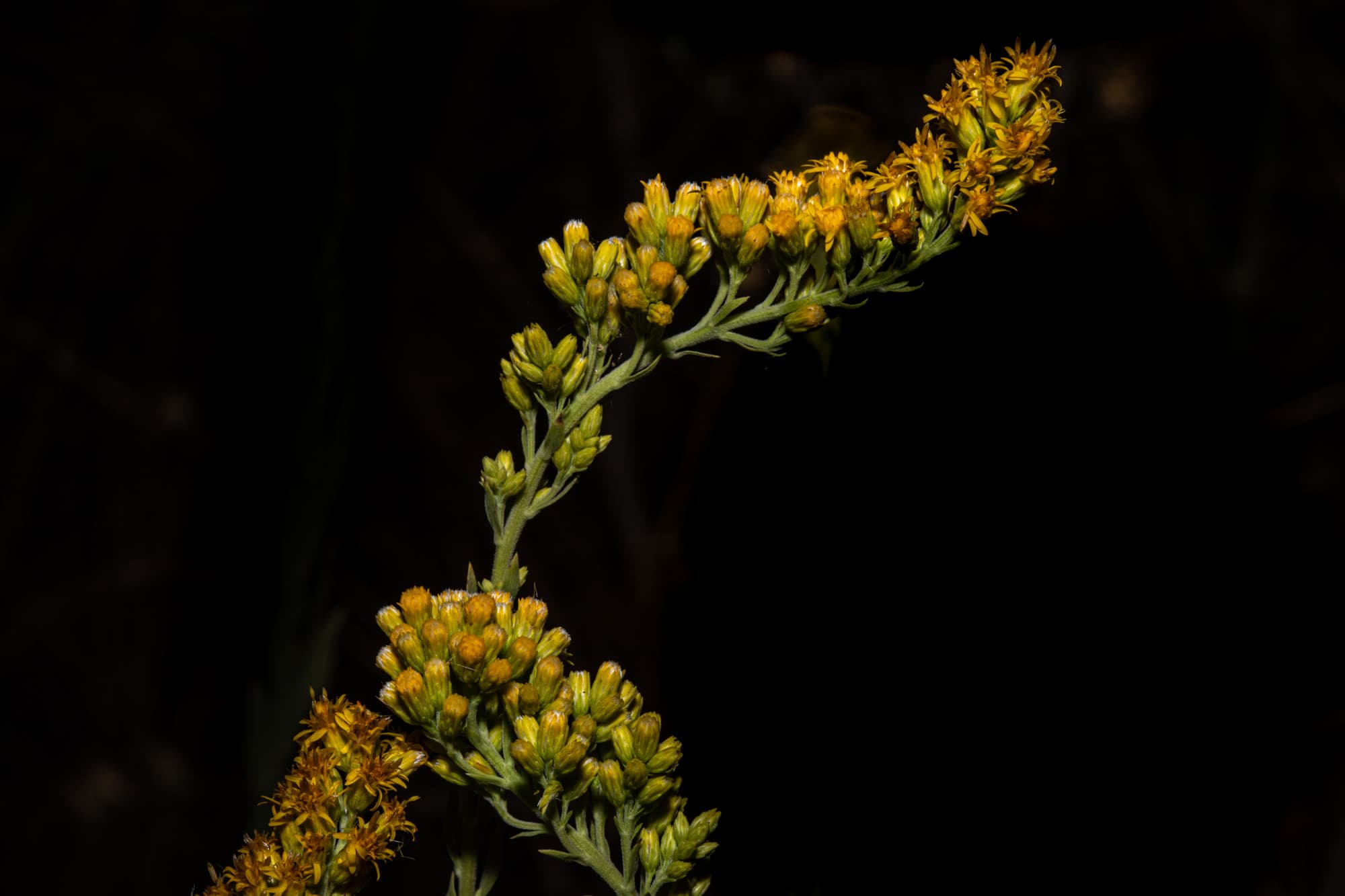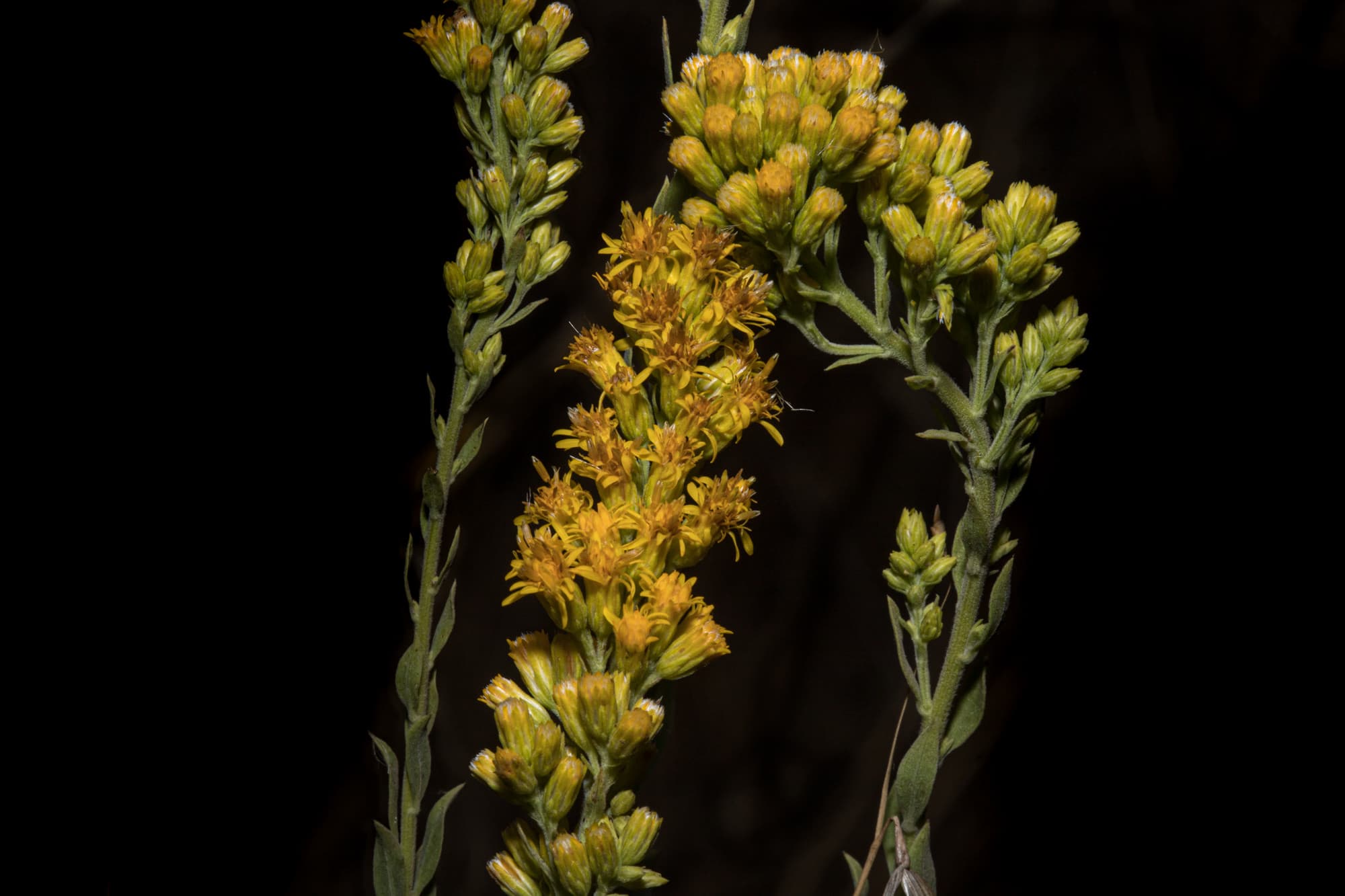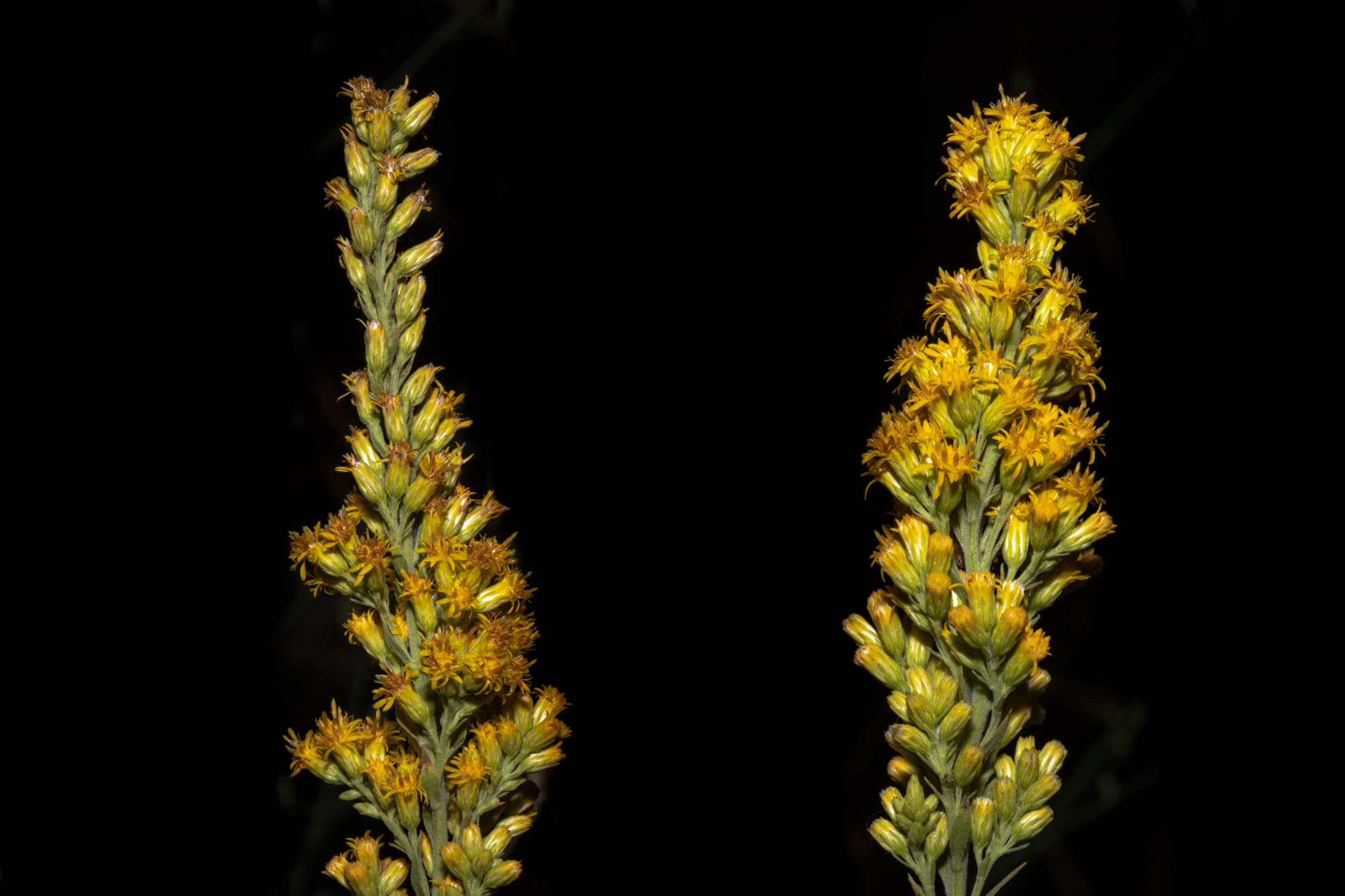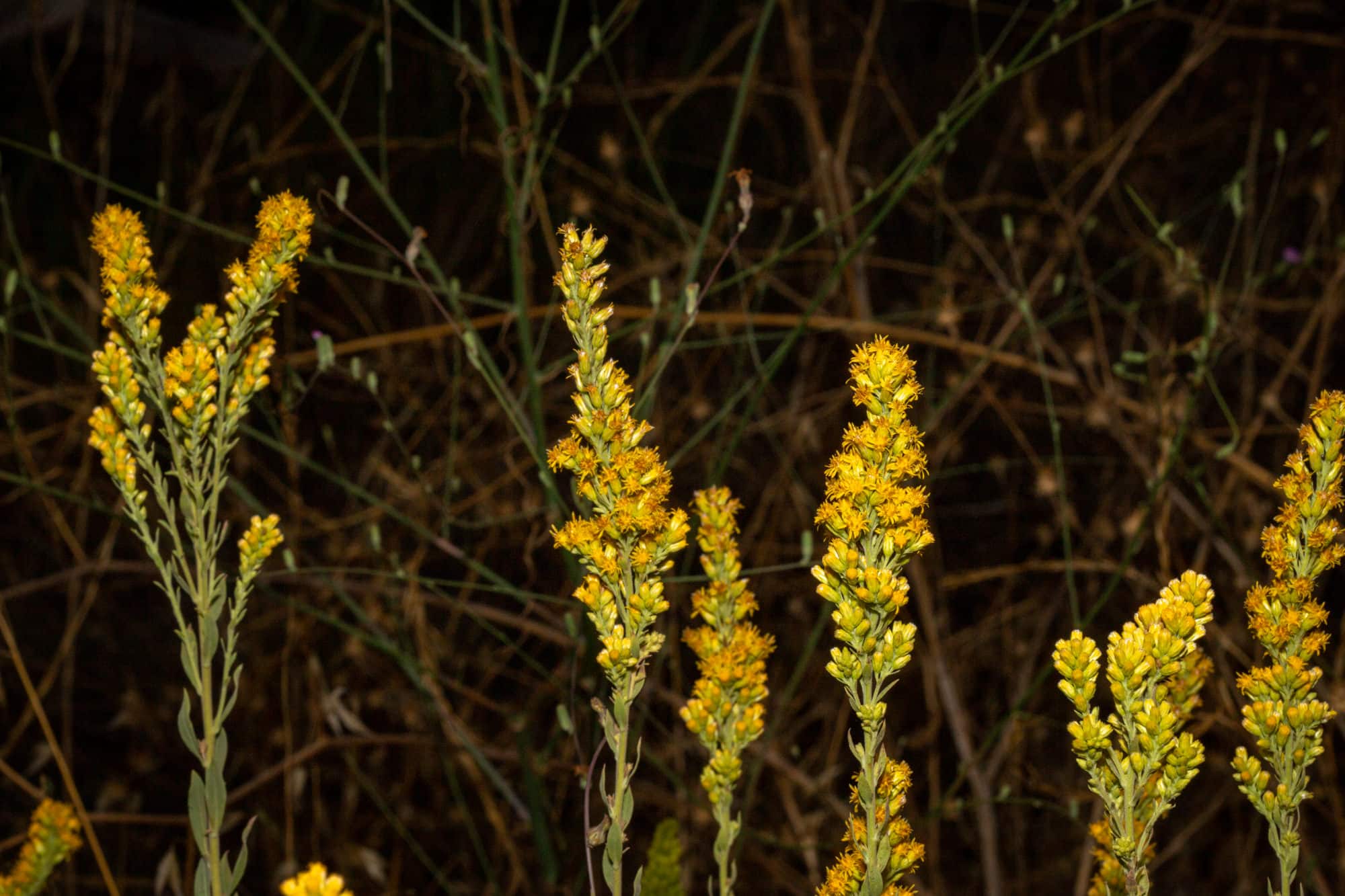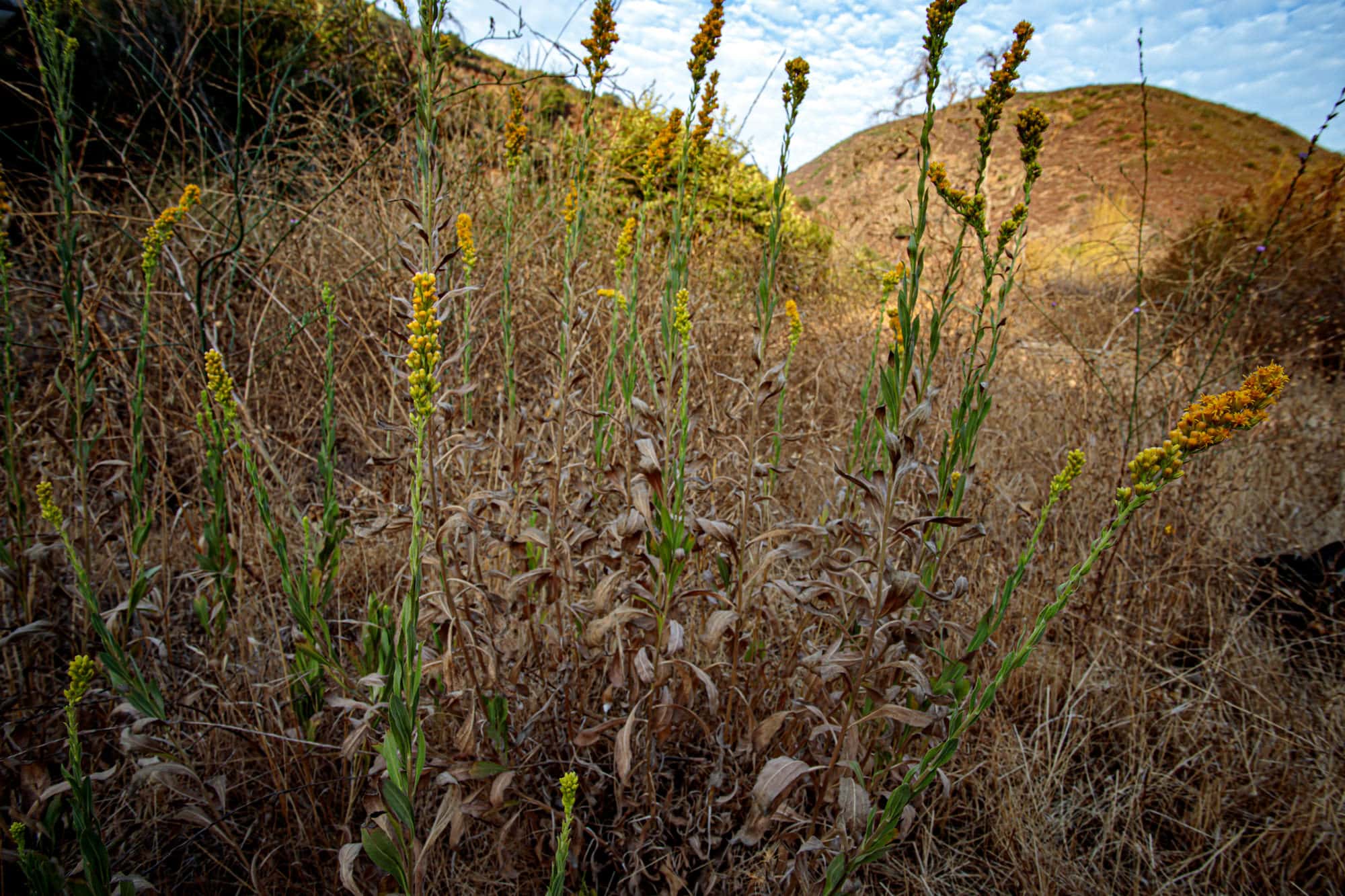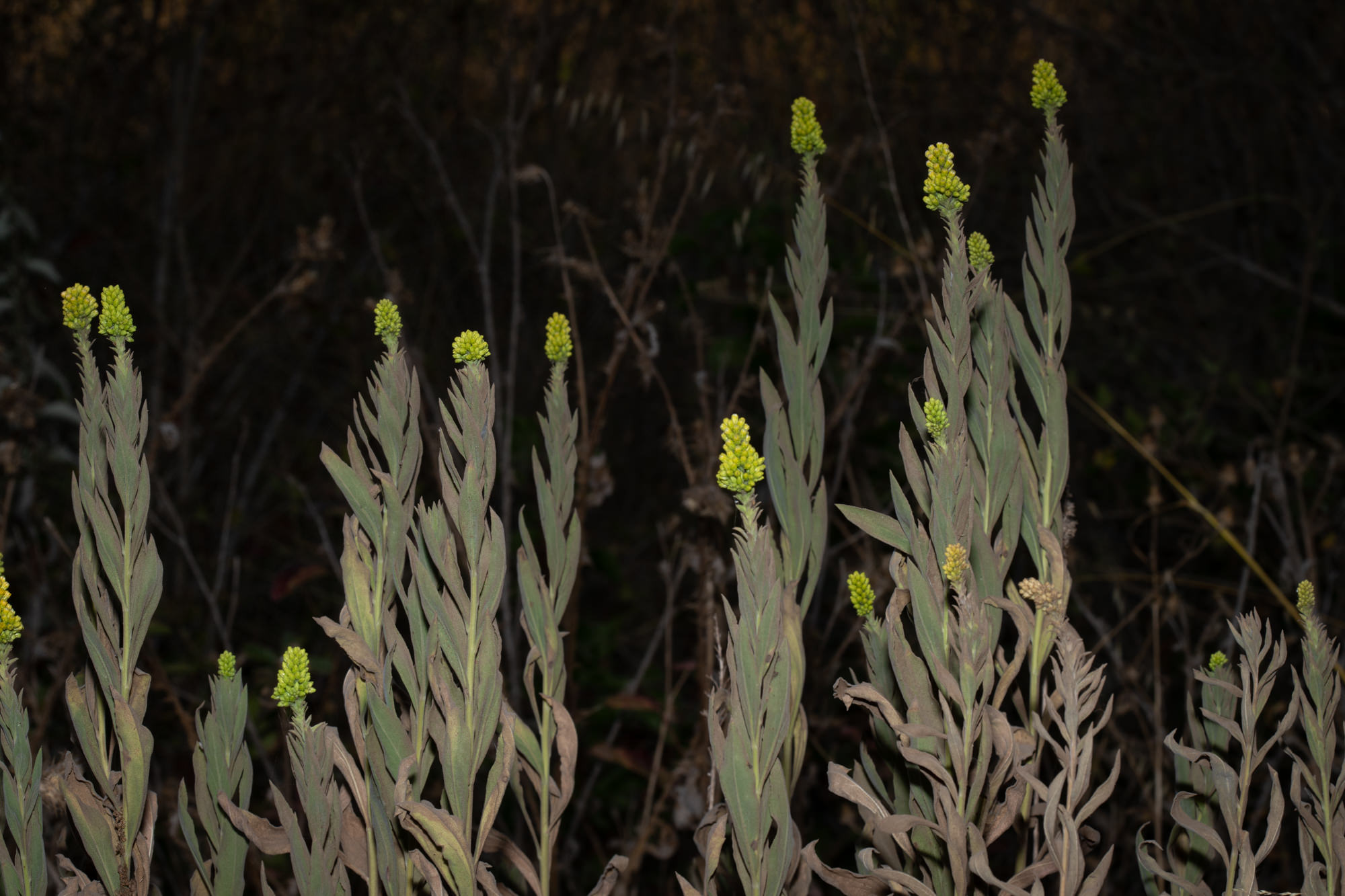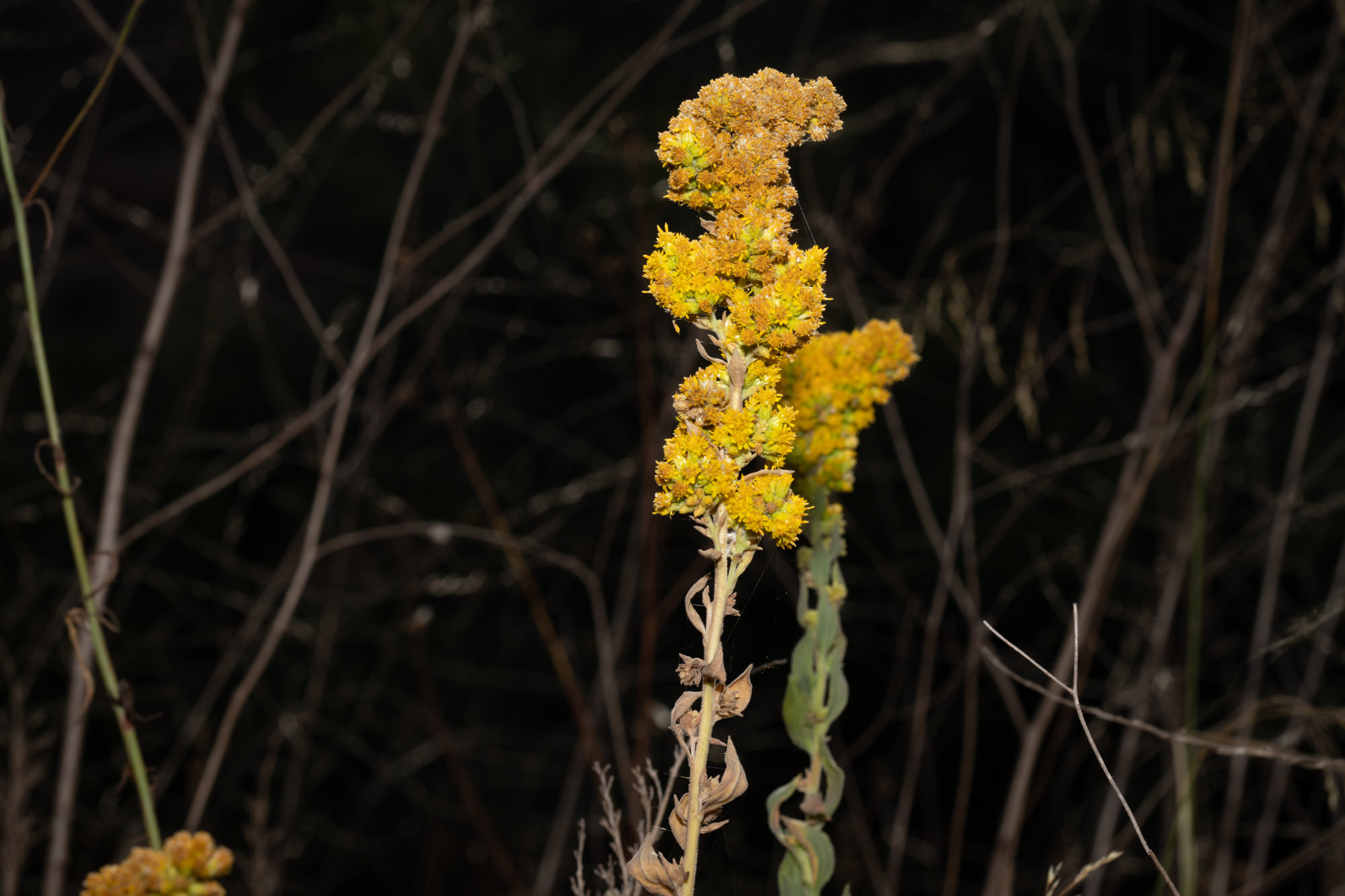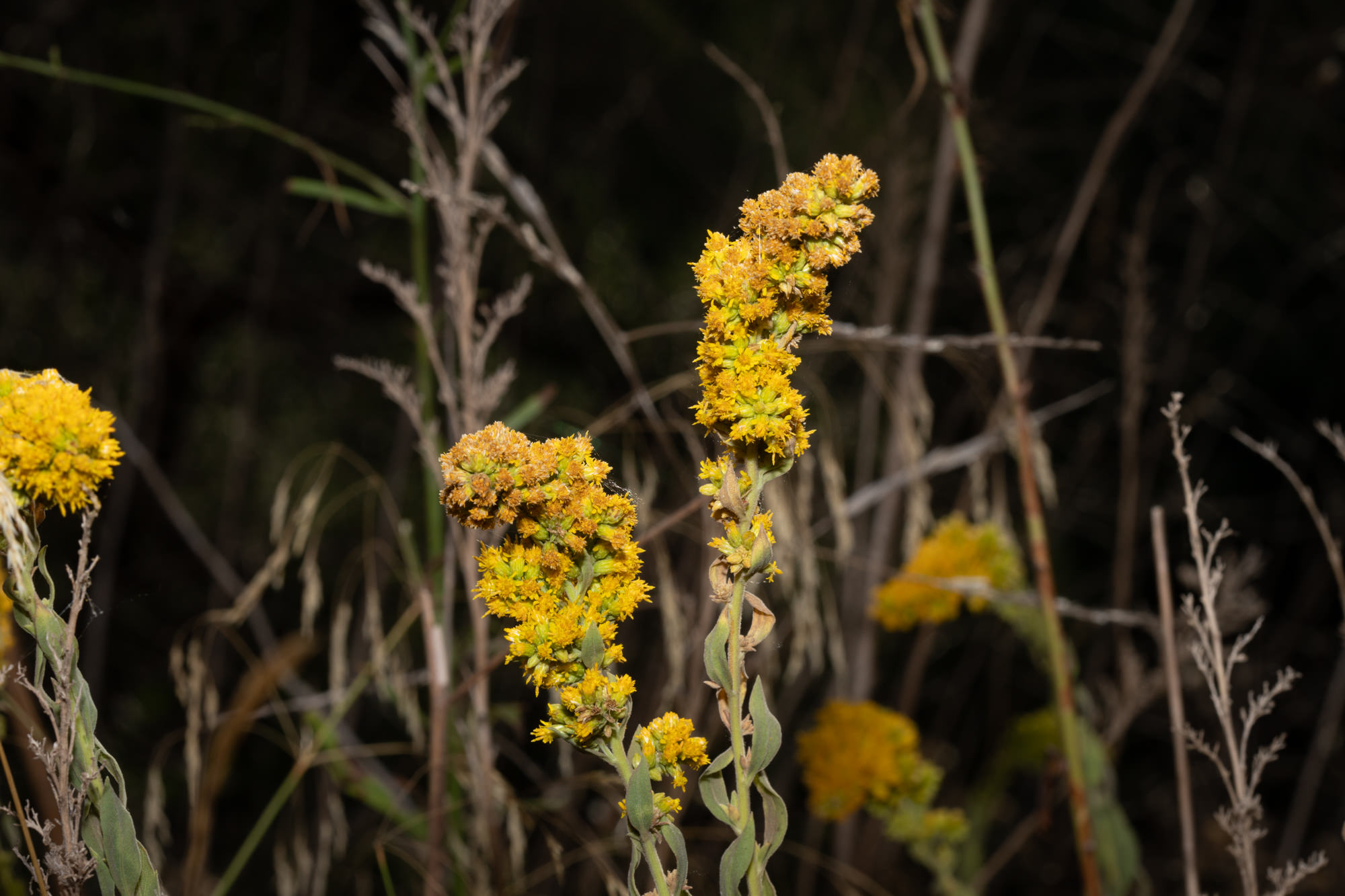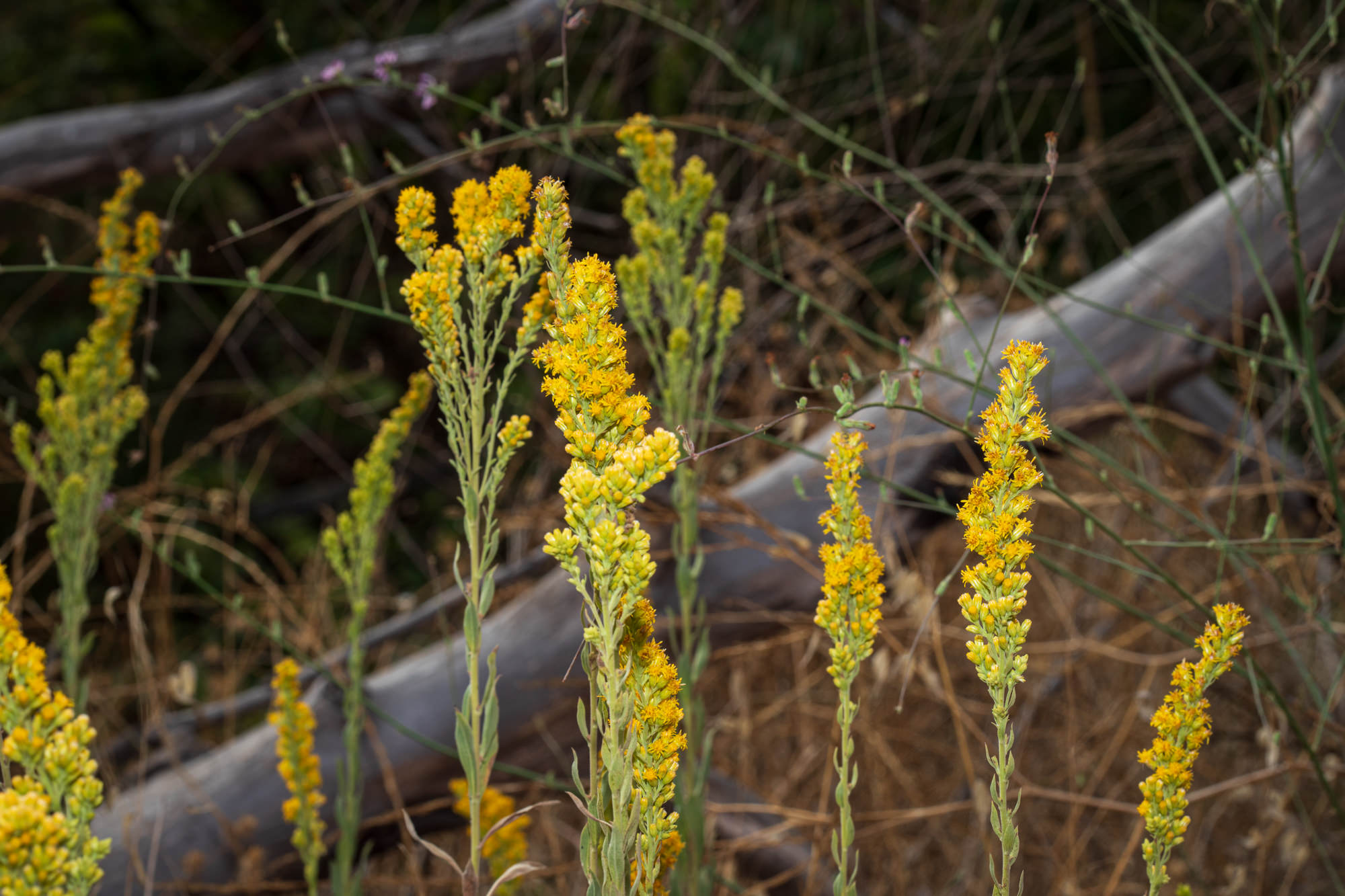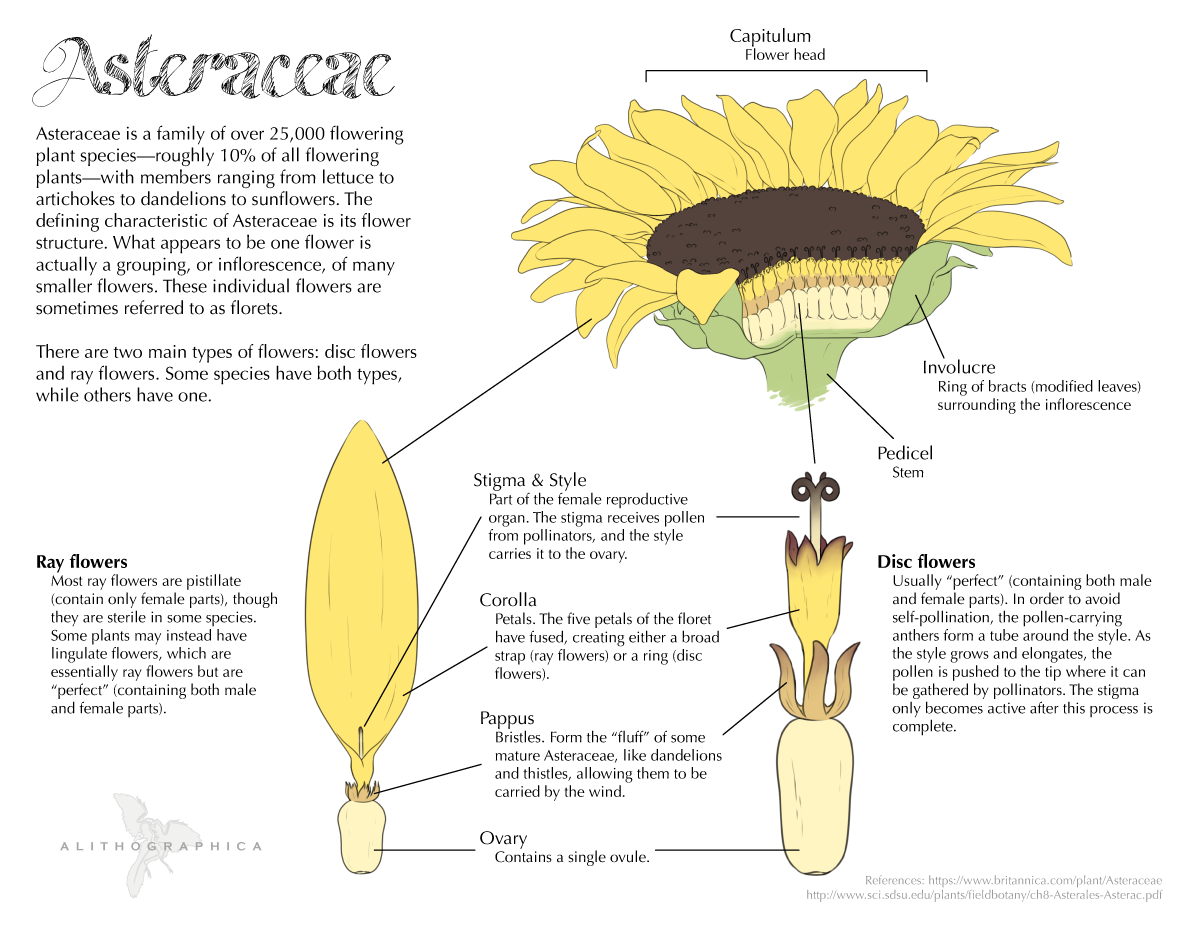California Goldenrod
- Solidago velutina
| Common Name(s): | California Goldenrod |
| Scientific Name: | Solidago velutina |
| Family: | Asteraceae (Sunflower) |
| Plant Type: | Perennial |
| Size: | up to 4 feet |
| Habitat: | coastal sage scrub, chaparral, oak woodlands |
| Blooms: | July to November |
| Fire Response: | Germinate from Seed |
California Goldenrod — Solidago velutina is another plant that has adapted to its environment by blooming in summer. Clusters of bright yellow flowers adorn the tips of the two to four foot tall spreading perennial. The flowers are actually composites — a combination of yellow ray and disc flowers. These flowers grow in clusters that vary in size from 25 to several hundred flower heads! The abundant flowers, with nectar and pollen, provide an important source of food for pollinators (adults and offspring). Preferred habitat includes coastal sage scrub, chaparral, oak woodlands and riparian forests/woodlands at elevations less than about 8500 ft (2.59 km). This plant dies back after blooming (late fall/winter) and re-grows again in spring. My first encounter with this plant in Wood Canyon Point Mugu State Park. I got off my bike to take a closer look at the plant, made some mental notes : Aster family, 2 to 3 feet (0.91 m) tall, nearly vertical leaves, flowers in clusters. After arriving home and looking Milt’s book, I was pleasantly surprised to ID yet another flower I had never seen before.
The leaves of California Goldenrod - Solidago velutina point upwards — this helped me identify this species and have three prominent veins. The stems tend to curve downward under the weight of the flower cluster, the blooms forming on a single side. Stems grow erect (without branching), and are covered by downy hairs; the leaves are similarly hairy. Leaves alternate and become smaller and more elliptical the further one moves up the stem. The lower leaves are oblong and clustered at the base of stems.
Flowers often appear spiked at as they begin assembling in clusters. By the time all the flowers are blooming the cluster weighs enough that the stem holding them curves back towards the ground. California goldenrod blooms in fall, from late August through October in our area. The name ‘goldenrod’ well describes the arrangement of the flowers.
Native Californians use powdered, dried leaves as a disinfecting powder for skin sores, wounds, burns and rashes. A decoction (tea) made from leaves was traditionally used for feminine hygiene, as a wash for skin sores and as a hair rinse.
Link to Calflora.net - the best source of this fascinating information
Solidago – Latin "solidus" meaning "whole" or "solid", referring to the plant's supposed ability to heal. Linnaeus named this genus in 1753. "Goldenrod" is a common name applied to all Solidagos.
velutina – velverty
Contributed by George Sherman
Aster diagram provided by Jenn Deutscher
Link to the artist's website
Featured Plants in the Asteraceae (Sunflower) Family:
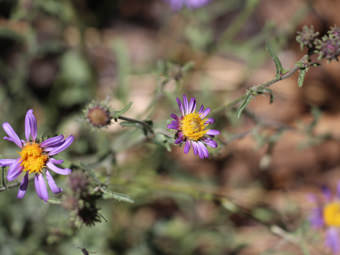
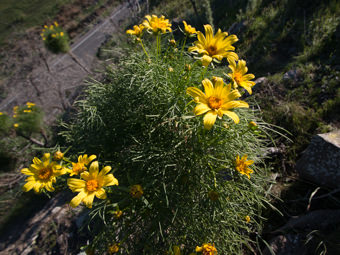
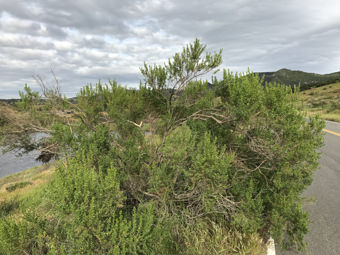
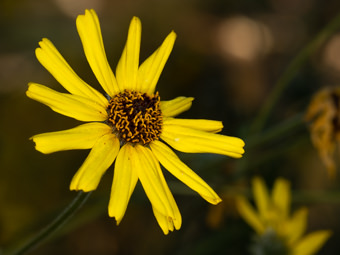
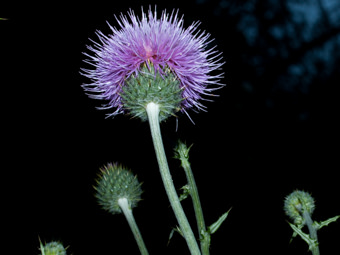
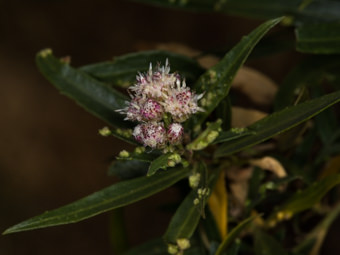
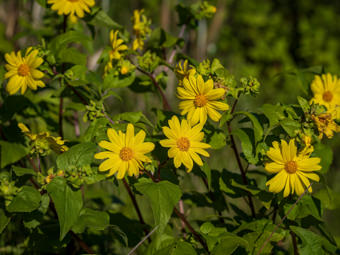
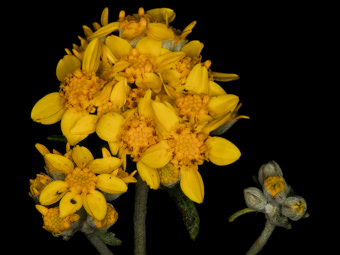
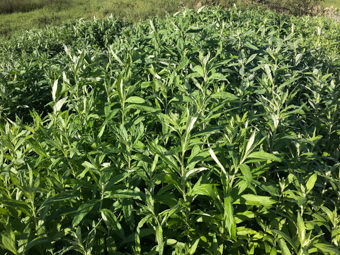
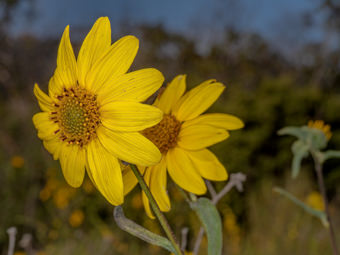
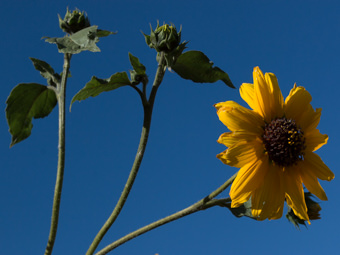
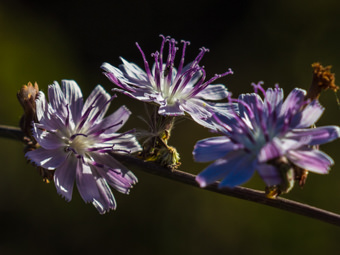
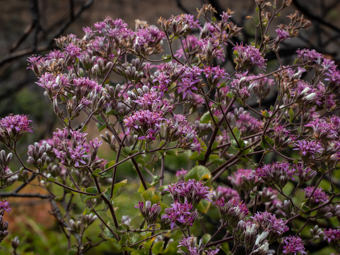
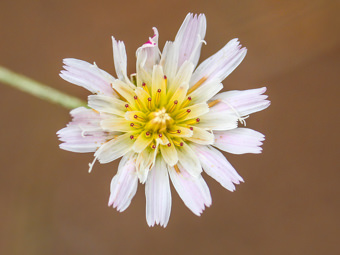
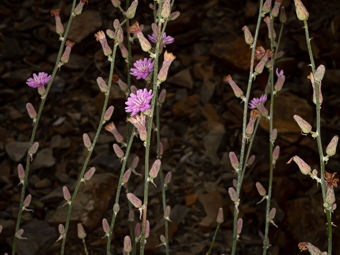
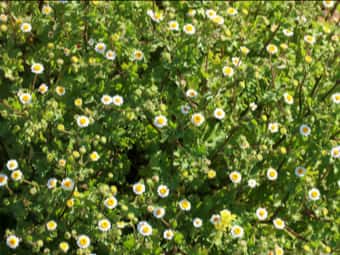

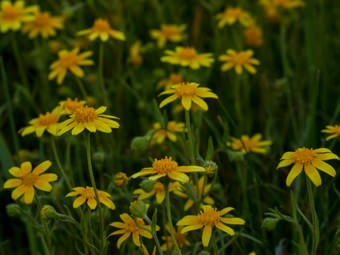
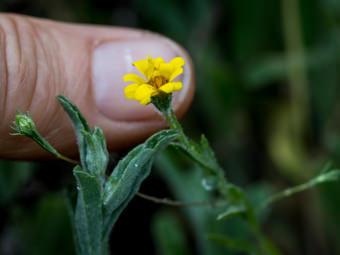
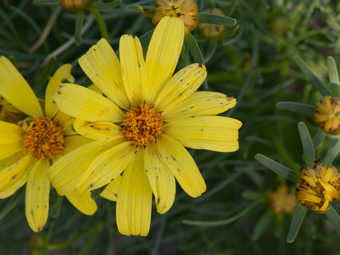
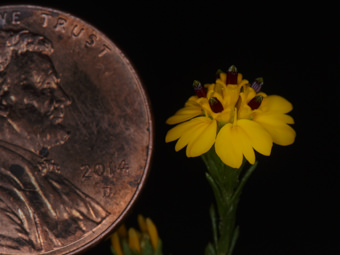

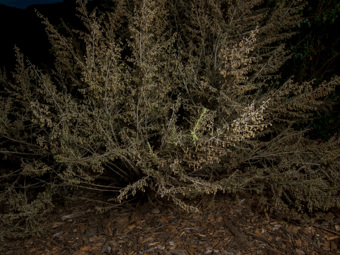

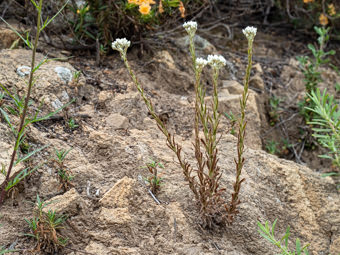
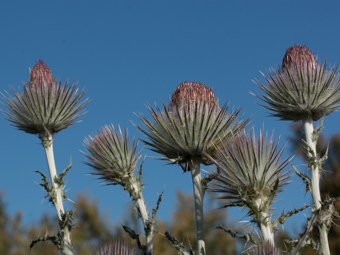
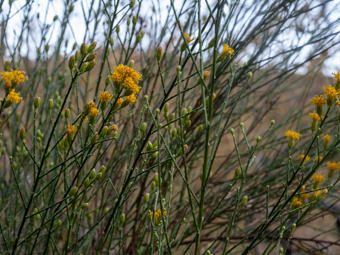
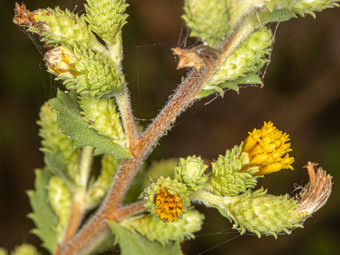
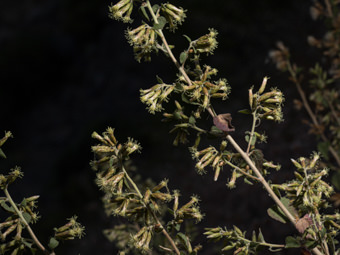
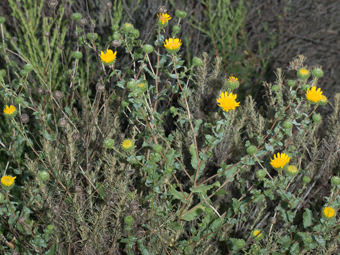
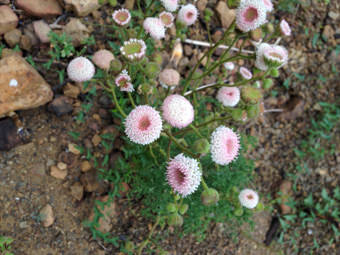
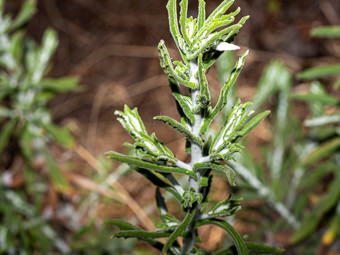
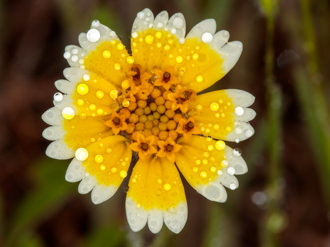
Last modified: August 21 2024 15:19:00.
Number of Images: 11
Image Size Total: 2,809,082
References:
Wildflowers of the Santa Monica Mountains, by Milt McAuleyFlowering Plants: The Santa Monica Mountains, Coastal and Chaparral Regions of Southern California, by Nancy Dale
Chumash Ethnobotany: Plant Knowledge Among the Chumash People, by Jan Timbrook
Leaf Shapes Primer - Botanical Terms for Leaves: - Link

